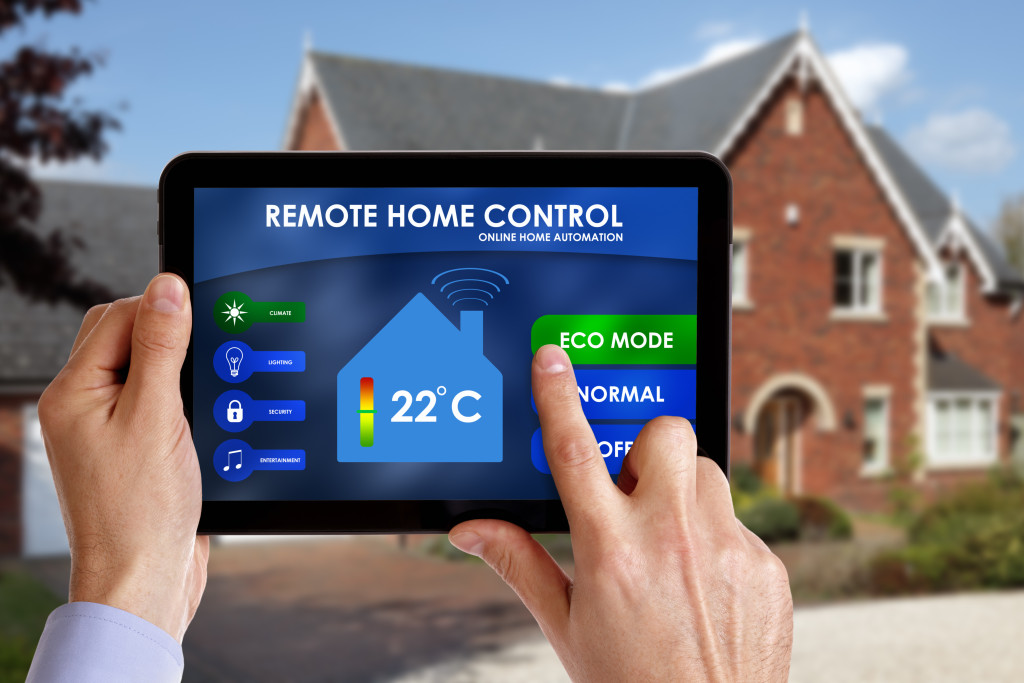In 2014, the movie Lucy attempted to visualize a digital world of the future. The film’s namesake and protagonist, played by Scarlett Johansson, loses her corporeal being and merges with the digital realm, becoming omnipresent across gadgets and gizmos.
It’s quite a ridiculous ending, even panned by some sci-fi critics. But hear me out. Amid the misplaced science and overly conscious writing, it foretells a key theme we’ll be seeing as we move further into digitalization: universal connectivity.
In fact, universal connectivity is here, and your home is its starting point.
Smart Homes Today
We are already living in the era of smart homes. In these homes, appliances and devices are connected through a central hub or gateway, typically accessible through smartphones. This networked set-up allows the homeowner to control appliances and devices from any remote area, as long as it can connect to the network through the internet or a mobile app.
It is often misconstrued that smart homes are entirely wireless, but this is only one type of system. Today’s home automation systems can either be wired, wireless, or a combination of both.
A wireless system is the cheapest and easiest to install. But it can have a few drawbacks in terms of reliability. With high-bandwidth applications, for example, there can be issues in signal strength. Nonetheless, these issues are reasonably tolerable. In wireless streaming of HDMI content through devices like Chromecast, you may encounter connectivity issues now and then. But for an average WiFi set-up, it doesn’t pose a significant challenge.
A wired system is more expensive but is more secure. Unlike wireless systems, which are prone to hacking, the traditionally cabled platform in wired systems lessens their vulnerability to attacks.
The combination system is arguably the best choice, as it gets the best of both worlds. With a reliable wired backbone linking several wireless points, you can be rest-assured with consistent signal output.
Changing Layouts to Accommodate More Digitized Essentials
Current smart home technology automates all kinds of appliances, from thermostats, TVs, lights, cameras, and even doorknobs. And the list will only get longer as we digitize other essentials.
Vehicles, in particular, may affect future trends in smart home layouts since they occupy a large area in our home. More people will shift to electric cars, and soon, electric car chargers may be in demand for homeowners as well, not just commercial businesses. To keep up, garages may need to upgrade designs to allow an easier installation of electric car chargers and create a generous space for hybrid cars.
Convenience: The Driving Force of Smart Homes
There are now 175 individual smart homes built and counting. By 2025, it is expected that 21.4% of households will be automated. And this rapid growth is all due to our constant need for convenience.
The pursuit of better living drives invention and ingenuity. It is what keeps the smart home industry enthusiastic in developing and enhancing its prototypes.
A smart home adjusts to a homeowner’s necessities and gives them complete control of their living spaces, even if they’re not physically at home.
Smart homes are also supporting the notification system, which drives our fast-paced lifestyle today. Notifications let you keep up with multiple tasks and filter the essential information you’ll need. They’re a core mechanism in all smart devices.
Like other smart devices, automated home systems use notifications to keep users aware of any updates or issues concerning their homes. This is most useful for security purposes, to prevent robberies and similar trespassing crimes.
The Artificial Intelligence Behind Smart Homes
Automation-ready appliances are equipped with self-learning technology that can analyze and learn the owner’s preferences. It can familiarize itself with established schedules and make adjustments when needed.
Some systems are focused on energy efficiency and use information and communication technologies (ICT) to autonomously make decisions on the usage and energy expenditures of each appliance.
Becoming One with Your Home
As artificial intelligence progresses, automated homes are only going to get smarter.
Imagine a less intrusive alarm system that wakes you at the most convenient time after it has analyzed data points on your sleeping behavior. As you get up and approach the bathroom, the shower is already running at your preferred temperature. You finish bathing and dry up, with your coffee and toast ready in the kitchen. You go to work riding an electric vehicle, which catches you up on some critical emails you may have missed the previous evening.
It’s a scenario concocted in sci-fi fantasies from the 80s and 90s, but with the current smart home technology, it doesn’t seem too far away anymore.





